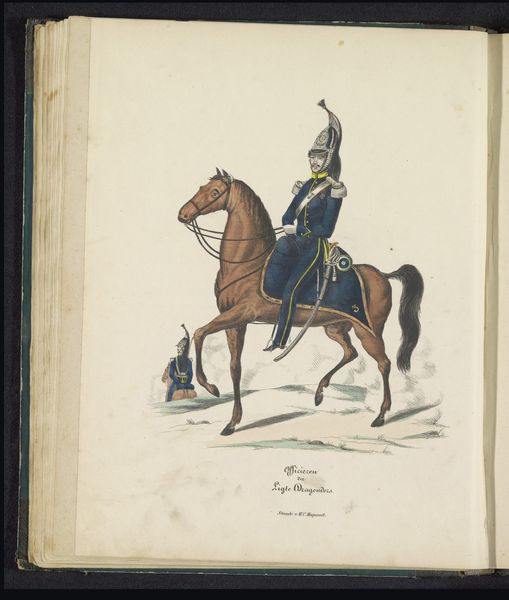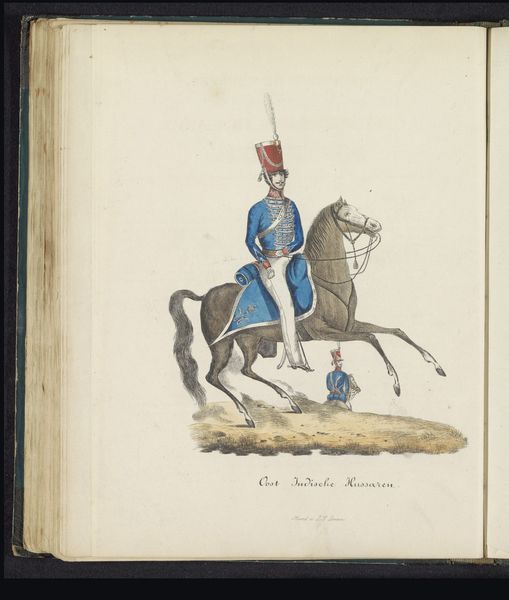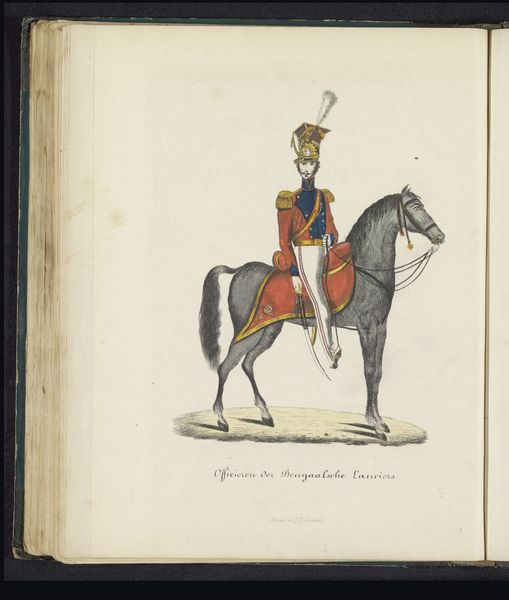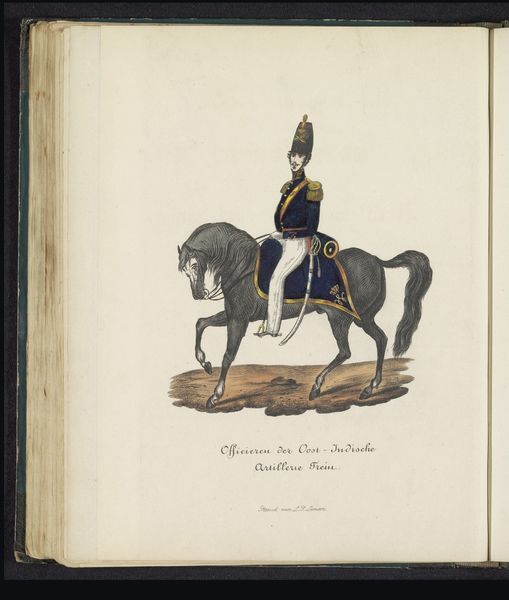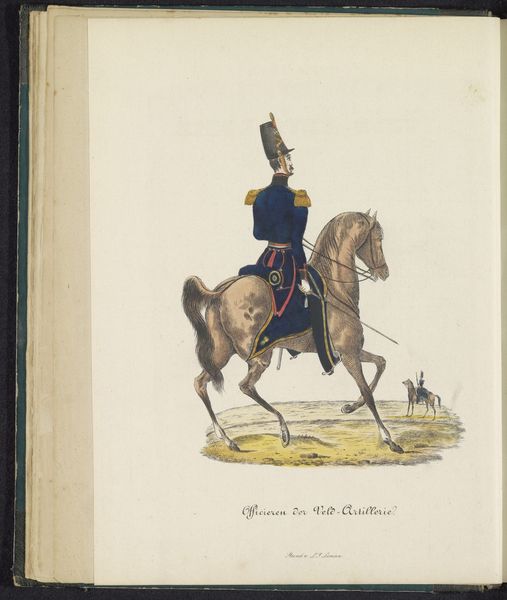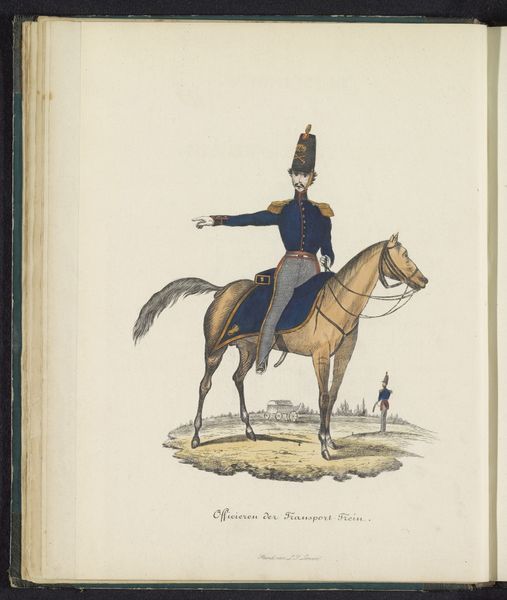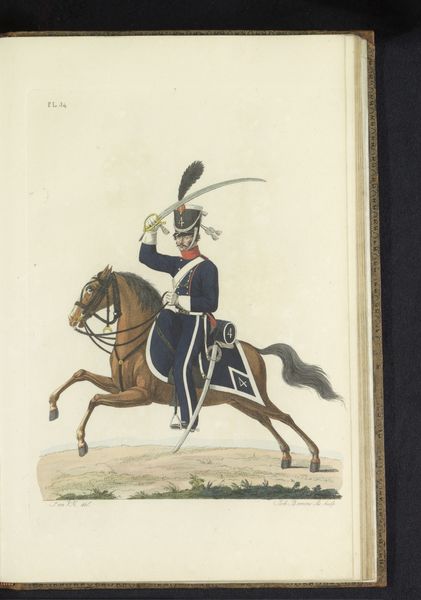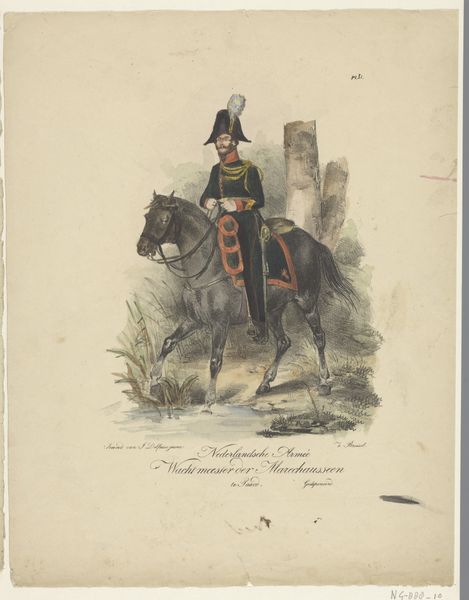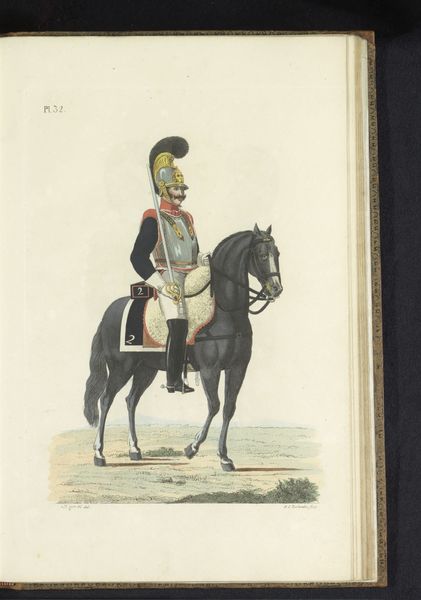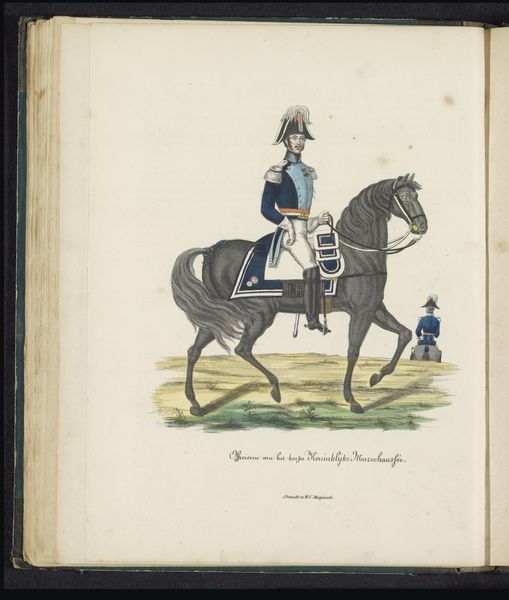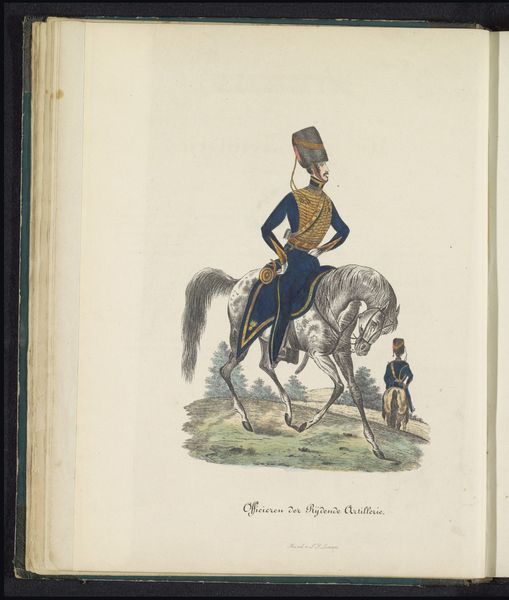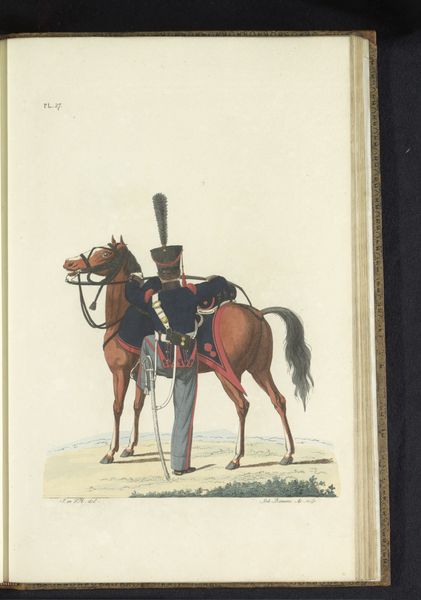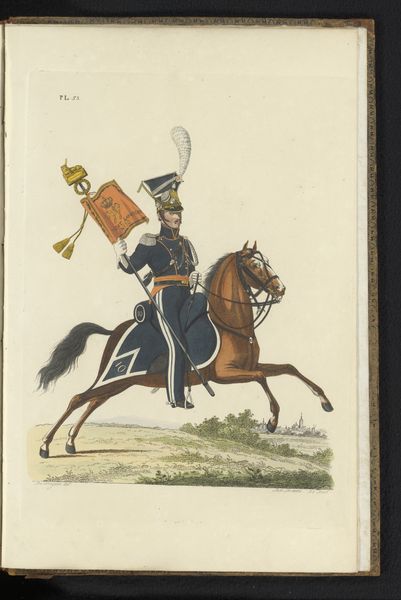
Uniform van de officieren van de zware dragonders, 1845 1845
0:00
0:00
drawing, coloured-pencil
#
portrait
#
drawing
#
coloured-pencil
#
coloured pencil
#
romanticism
#
watercolour illustration
#
history-painting
Dimensions: height 270 mm, width 200 mm
Copyright: Rijks Museum: Open Domain
Curator: Immediately, I’m struck by the sheer starchiness of it all. That uniform! It’s almost shouting, “Look at me! I’m important!” But… does it have to be quite so rigid? Editor: This is "Uniform van de officieren van de zware dragonders, 1845" a coloured-pencil drawing by Willem Charles Magnenat, here on display at the Rijksmuseum. It gives us insight into the military regalia of the time. Curator: Regalia, yes, that’s the perfect word. It feels more like a costume than something functional. I can’t imagine that towering helmet was particularly practical in a skirmish. There’s something almost theatrical about it, wouldn’t you say? Like it's ready for the stage rather than a battlefield. Editor: The image highlights how uniforms serve as visible symbols of power and social hierarchy. Think of the socio-political messages they convey, beyond just practicalities. These heavy dragoon officers projected authority and the might of the state, right down to the meticulously rendered details. The colour, cut, the expensive trim – all reinforcing that visual narrative. Curator: I do see your point. The precision is undeniable; but also impersonal. Where is the individual within that sartorial armour? The romantic style with almost watercolor illustrations does convey that time of heroic events. But what were their lived experiences? Editor: The drawing gives only hints. Consider who commissioned it and where it would be displayed – likely reinforcing a carefully constructed image of the military and its role. It wasn't about capturing the reality of war, but about crafting a particular vision, and controlling the narrative. Curator: Yes, that’s what feels almost disturbing: the lack of intimacy. You wonder about the human cost buried under the bright colors and meticulous lines. If these uniforms were meant to be signs of power, they ended up being empty shell-like figures. Editor: The artwork also gives you the idea of the period. The 1840s, Europe on the brink of revolutions… Uniforms projected power but were starting to fail in that intention. There is that strange detail of an incomplete figure almost in miniature. A glimpse to something raw? Curator: Absolutely fascinating. It prompts reflection on what remains unsaid, which becomes more potent than what’s visibly rendered. Editor: And in the end, this is what gives the image its power, both as a historical document and as a strangely compelling artistic statement.
Comments
No comments
Be the first to comment and join the conversation on the ultimate creative platform.
